Precision Power PC 8, PC10, PC12, PC15 Owners Manual
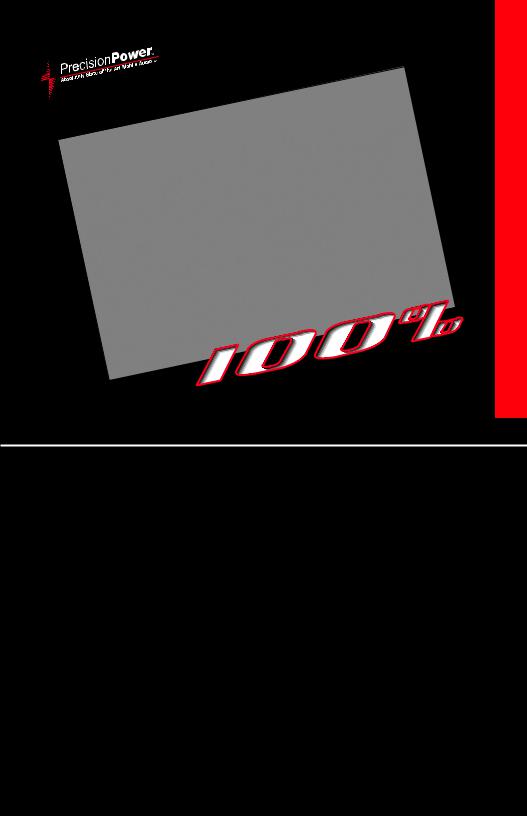
PC 8 / PC10 / PC12 / PC15 OWNER'S MANUAL POWERCLASSTM
CONTENTS |
|
(Click on a topic to view) |
|
Congratulations |
PC10 Response Graphs |
Introduction |
PC12 Specifications |
Sealed Enclosure |
PC12 Response Graphs |
Sealed Enclosure |
PC15 Specifications |
Ported Enclosure |
PC15 Response Graphs |
Ported Enclosure |
Additional Information |
PC8 Specifications |
Enclosure Calculations |
PC8 Response Graphs |
Enclosure Calculations |
PC10 Specifications |
Warranty |
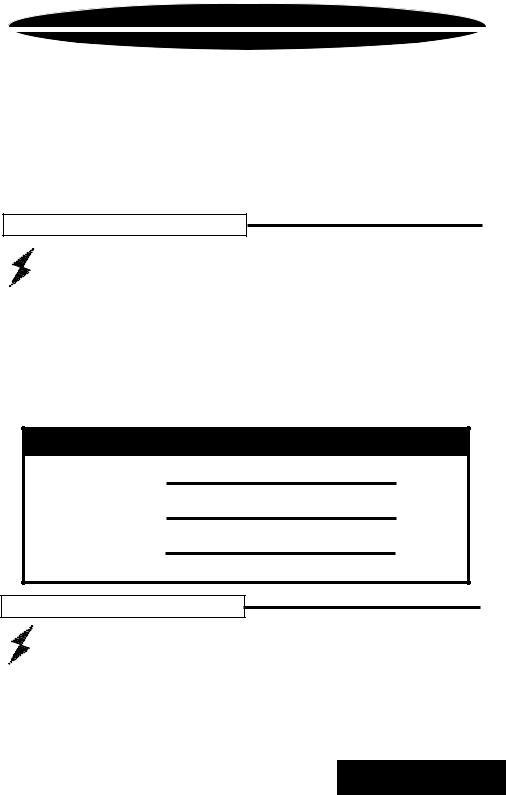
Congratulations and thank you.....
for choosing PrecisionPower audio epuipment. At PrecisionPower we proudly design, engineer and manufacture audio products at our facility in Phoenix, Arizona. Our award winning engineering team utilizes innovative technology to consistently deliver Absolutely State of the ArtTM performance, sound quality, reliability, and value. This PrecisionPower product reflects our commitment to offer you unparalleled versatility and quality for years of dependable service and listening enjoyment.
S ervice
Do not attempt to service PrecisionPower products yourself. Performing exploratory surgery on your audio equipment yourself will void the warranty. Many parts of your PrecisionPower gear are custom built to our specifications. Our factory parts are not made available to anyone else nor are they for sale. Our goal
is to make sure that your PrecisionPower product will always sound as good as the day it was purchased. Contact your authorized PrecisionPower dealer about obtaining any warranty service through PrecisionPower.(See Warranty insde back cover)
F O R YO U R R E C O R D S :
M o d e l
Serial Number
Purchase Date
C aution!
The extended use of a high powered audio system may result in hearing loss or damage. While PrecisionPower systems are capable of "Concert Level" volumes with incredible accuracy, they are also designed for you to enjoy at more reasonable levels all of the sonic subtleties created by musicians. Please observe all local sound
ordinances.
RETURN TO CONTENTS
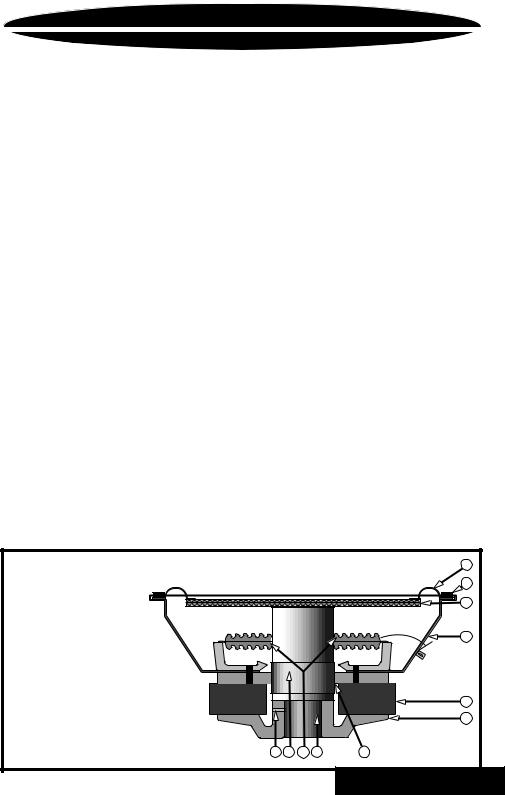
INTRODUCTION
Your new PowerClass Flat Piston subwoofer is part of an exciting line of loudspeakers, PC8, PC10, PC12 and PC15, which represent the extraordinary design achievements of the PrecisionPower Engineering Team. The PrecisionPowerClass Flat Piston subwoofers have been engineered from the ground up and are constructed at our factory in Phoenix from the finest materials available. Like all Precision Power products, they reflect our commitment to “Absolutely State of the Art” performance and ultimate sonic quality.
The PC8, PC10 and PC12 subwoofers incorporate a 2” voice coil while the PC15 incorporates a 3” voice coil. All have Dual Layer voice coils wound onto black anodized aluminum formers and are available in both 4Ω and 8Ω versions. The voice coils are cooled and given increased mechanical damping through the use of a ferrofluid filled magnetic gap. The cooling, and therefore power handling, is further enhanced by the extended pole piece and vented magnet cavity. The long field motor structure results in a substantial reduction of distortion over conventional loudspeaker systems. Increased linearity at large excursion is obtained by using dual matched rear suspension components together with the finest quality poly-foam surround.
The most unique feature is the use of a flat diaphragm instead of a conical structure. The diaphragm is constructed from a combination of state of the art materials which include E-Glass and Nomex honeycomb. The result is a diaphragm that is exceptionally stiff and lightweight which does not exhibit cone flex distortion or the buckling effects inherent in conventional designs. Additionally, PrecisionPower chose a high grade steel basket design to complement the demands of this rugged driver.
Included in this manual are a number of sample enclosure drawings. They are by no means the only enclosures to use, but rather a starting point in the right direction. To determine the correct enclosure for your needs many factors need to be addressed (amount of power, vehicle, placement, crossover, etc.) Therefore, as always, PrecisionPower recommends that your subwoofer be installed by an Authorized PrecisionPower Dealer.
|
|
|
|
|
1 |
1. |
Composite poly-foam surround |
|
|
|
2 |
2. |
Trim ring |
|
|
|
3 |
3. |
E-Glass/Nomex |
|
|
|
|
|
honeycomb diaphragm |
|
|
|
|
4. |
Stamped steel basket |
|
|
|
4 |
5. |
Magnet structure |
|
|
|
|
|
|
|
|
||
6. |
Forged steel back plate |
|
|
|
|
7. |
Magnet cavity vent |
|
|
|
|
8. |
Voice coil/Black anodized |
|
|
|
|
|
aluminum former |
|
|
|
5 |
9. Dual complementary vented spiders |
|
|
|
||
|
|
|
|
||
10. |
Vented pole piece |
|
|
|
6 |
11. |
Ferrofluid filled magnetic gap |
|
|
|
|
|
7 |
8 |
9 |
10 |
11 |
RETURN TO CONTENTS
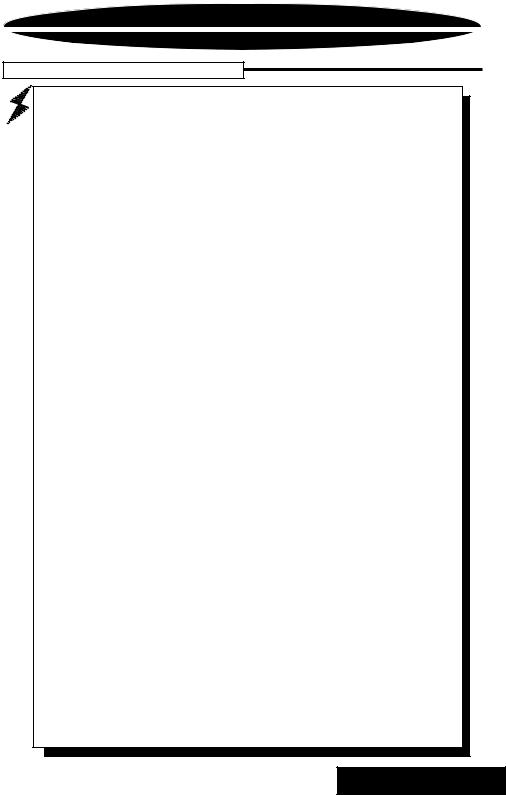
SEALED ENCLOSURE
Building A Sealed Enclosure:
1. Build a sealed box with specified dimensions of L x W x D per drawing. (See chart for suggested box sizes) Use 3/4” thick material (preferably medium density fiber board or equivalent) for box construction. Be sure to use wood glue and silicone to ensure your enclosure is sealed properly, as air leaks will affect the performance of a subwoofer. (The use of an air stapler will help to achieve the nicest results for constructing the enclosure.)
2.Locate the supplied template and with an exacto knife cut through the correct speaker outline for your woofer, following the printed lines. Then, trace the circle template and mounting hole pattern for your PrecisionPower subwoofer on the appropriate side of the box. (See Diagram)
3.Cut the speaker hole from the face of the box with a router. Use a guide or template whenever possible for a clean, accurate job; use a jig saw only if a router is not available. Drill out the holes for T-nuts with a 7/32” drill bit.
4.Place the woofer in the opening which you have cut into the box to check the fit. Make sure that the T-nut holes lineup.
5.Install 10-24 T-nuts (not supplied) into the 7/32” holes from the backside of the face board.
6.Run an appropriate length of wire into the box, leaving enough length to comfortably install the wires to the terminals on the woofer before placing the speaker into its mounting hole. Use a terminal cup whenever possible.
7.Vacuum out any wood shavings and dust that could find it's way into the woofer from the inside of the speaker box. Fill the box with polyester fiberfill. Use a ratio of 1/2lb per cubic foot.
8.Apply the foam gasket to the speaker to ensure a sealed fit. Be sure that the mounting holes line up.
9.Connect the wires to the woofer observing the proper polarity, positive and negative terminals. Strip away the insulation of the wire about 1/4" and install the wires into the terminal posts.
10.Install the woofer into the box using 10-24 bolts to fit the t-nuts.
11.Once the box is completed it is time to connect the speaker wire coming from the subwoofer enclosure to your amplifier. Check that you use the proper wire for consistent polarity, positive and negative. (Refer to amplifier owner’s manual.)
12.Finally, sit back and enjoy to the incredible enhancement your new PrecisionPower subwoofer brings to your audio system.
2
RETURN TO CONTENTS
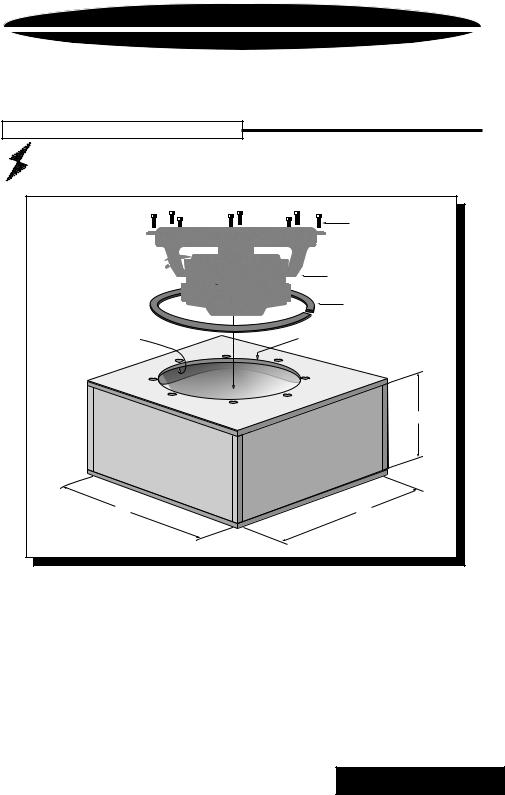
SEALED ENCLOSURE
Sealed speaker diagram
|
10-24 Allen head bolt |
|
Subwoofer |
|
Foam seal gasket |
10-24 T-nut |
Mounting hole diameter |
|
D |
L |
W |
|
Internal dimensions should be calculated to determine the correct box volume. Be sure to allow for speaker displacement and extra bracing (if used).
3
RETURN TO CONTENTS
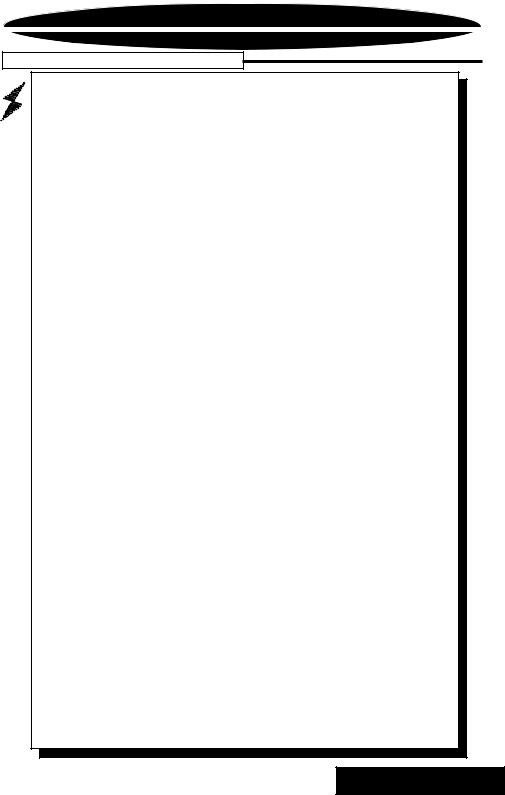
PORTED ENCLOSURE
Building A PPI Ported Enclosure:
1. Build a sealed box with internal dimensions of LxWxD as specified for your woofer. Use 3/4” thick material (preferably medium density fiber board or equivalent) for box construction. Be sure to use wood glue and silicone to ensure your enclosure is sealed properly, as air leaks will affect the performance of a subwoofer. (The use of an air stapler will help to achieve the nicest results for constructing the enclosure.)
2.Locate the supplied template and with an exacto knife cut through the correct speaker outline for your woofer, following the printed lines. Then, trace the appropriate circle and mounting hole pattern for your
PrecisionPower subwoofer on the proper side for mounting the woofer. Be sure to offset the woofer to one side to allow for the port to fit comfortably.(See diagram)
3.Cut the speaker hole out of the box with a router. Use a guide or template whenever possible for a clean, accurate job; use a jig saw only if a router is not available. Drill out the mounting holes with a 7/32” drill bit.
4.Locate the port material which you are going to use. Trace the pattern of the appropriate hole needed for the port, then cut the hole out. When installing the port, make sure you have a distance of at least the diameter of the port from the end of the port to the wall inside the box. To best seal off any air leaks use silicone around the inside edge. Also, bevel the inside edge of both ends of the port to cut down on port noise.
5.Place the woofer into the hole which you have cut into the box to check the fit. Make sure that the T-nut holes line up.
6.Install 10-24 T-nuts (not supplied) into the 7/32” holes from the backside of the mounting board.
7.Run an appropriate length of wire into the box, leaving enough length to comfortably install the wires to the terminals on the woofer before placing the speaker into its mounting hole. Use a terminal cup whenever possible.
8.Vacuum out any wood shavings and dust that could find it's way into the speaker from the inside of the speaker box. Line the box with a polyester fiberfill blanket or fiberglass insulation about 1” thick.
9.Apply the foam gasket to the speaker to ensure a sealed fit. Be sure that the mounting holes line up.
10.Connect the wires to the woofer observing the proper polarity, positive and negative terminals. Strip away the insulation of the wire about 1/4" and install the wires into the terminal posts.
11.Install the woofer into the box using the provided 10-24 bolts.
12.Once the box is completed it is time to connect the speaker wire coming from the subwoofer enclosure to your amplifier. Check that you use the proper wire for consistent polarity, positive and negative.
(Refer to amplifier owner’s manual.)
13.Finally, sit back and enjoy to the incredible enhancement your new PrecisionPower subwoofer brings to your audio system.
4
RETURN TO CONTENTS
